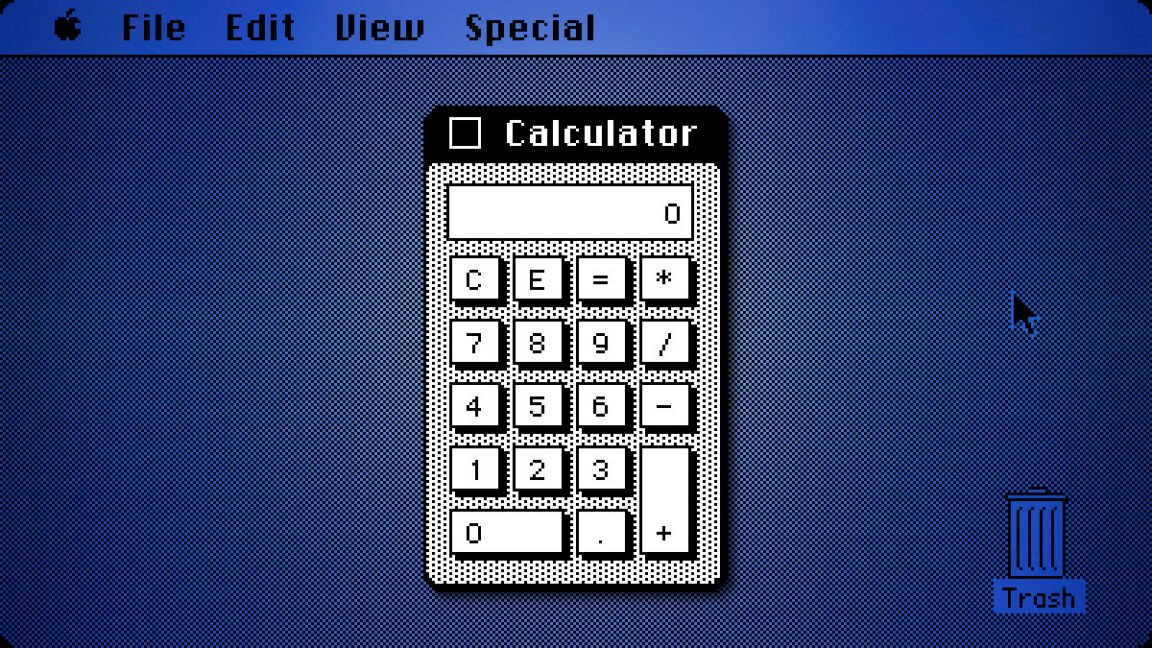
Rather than continue the endless revision cycle, Espinosa took a different approach. According to Hertzfeld, Espinosa created a program that exposed every visual parameter of the calculator via pull-down menus: line thickness, button size, background pattern, and more. When Jobs sat down with it, he spent about 10 minutes adjusting the settings until he found a combination he liked.
The approach worked. When Jobs was given direct control over the parameters rather than having to verbally explain his preferences, Jobs quickly arrived at a design he was satisfied with. Hertzfeld notes that he implemented the calculator’s UI a few months later using Jobs’ parameter options from that 10-minute session, while Don Denman, another member of the Macintosh team, handled the mathematical tasks.
That 10-minute session produced the calculator design that shipped with the Mac in 1984 and remained virtually unchanged through Mac OS 9, when Apple discontinued that OS in 2001. Apple replaced it with a new design in Mac OS X, ending Calculator’s 17-year run as the primary calculator interface for the Mac.
why did it work
Espinosa’s construction set was an early example of what later became common in software development: visual and parameterized design tools. In 1982, when most computers displayed monochrome text, the idea of letting someone fine-tune visual parameters through interactive controls without programming was quite visionary. Later, tools like HyperCard would formalize such an idea into a full visual application framework.
The primitive calculator design tool also revealed something about Jobs’s management process. He knew what he wanted when he saw it, but perhaps sometimes he had difficulty articulating it. By giving him the ability to manipulate directly, Espinosa eliminated that communication problem entirely. Later, when he returned to Apple in the late 1990s, Jobs would famously insist on evaluating products by direct use rather than through canned PowerPoint demos or lists of specifications.
The longevity of Jobs’s 10-minute design sessions shows that the approach worked. Calculator has survived nearly two decades of Mac OS updates, leaving behind many elaborate interface elements. What started as a workaround became one of the Mac’s most ingenious but enduring designs.
By the way, if you want to try out the original Mac OS calculator yourself, you can run various ancient versions of the operating system in your browser thanks to the Infinite Mac website.
